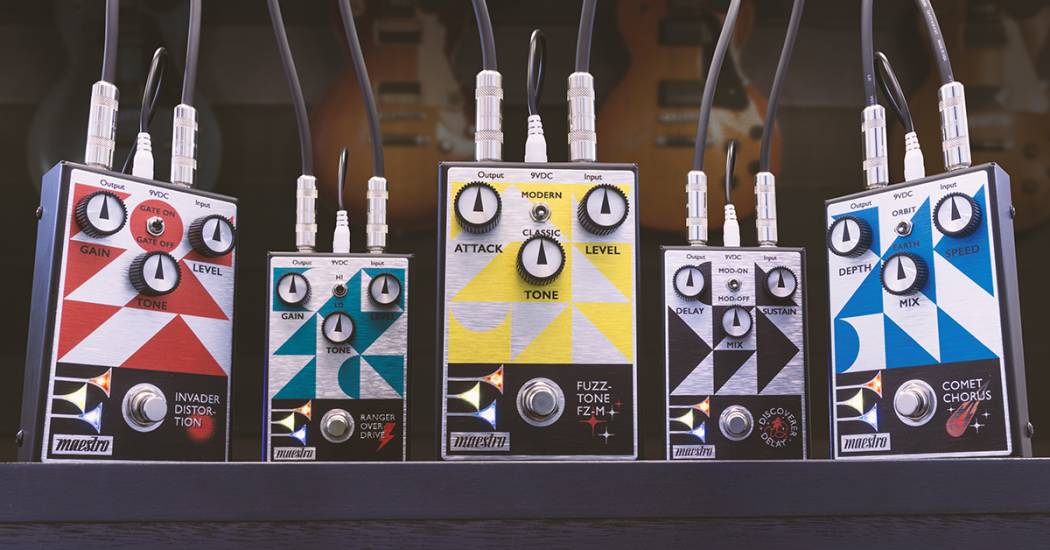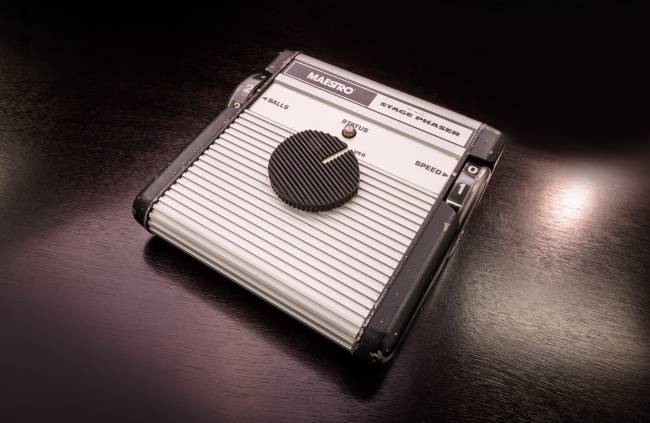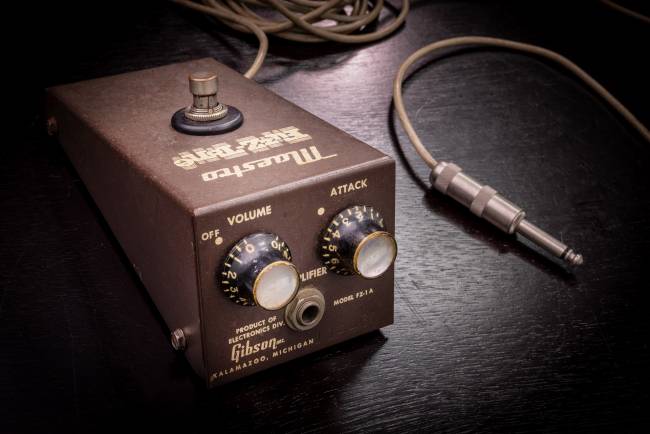
In 1962, Maestro released the FZ-1 Fuzz-Tone. Designed by engineers Glenn Snoddy and Revis V. Hobbs to emulate Grady Martin’s distorted guitar tone on the Marty Robbins hit “Don’t Worry,” the FZ-1 entered the mainstream consciousness in 1965, spitting and growling through the opening riff of the Rolling Stones’ “(I Can’t Get No) Satisfaction.” That moment was a game changer and forever altered how electric guitarists approach their sound.
Throughout the 1960s and ’70s, Maestro went way beyond the FZ-1, but, as a brand, they never received the full recognition that guitarists at Sweetwater think they deserve. In 1979, Maestro’s parent company, Norlin, was under financial distress and opted to cease production of all Maestro products. Of course, this was on the cusp of the guitar-pedal boom of the 1980s, a turning-point moment that Maestro, a true stompbox pioneer, sat out.
Rewind
Maestro’s short run of effects made a massive impact on the music industry. The company was constantly innovating, and they employed some of the industry’s brightest minds. By the late 1960s, the company had released the BG-1 Boomerang Wah, the BG-2 Boomerang Wah/Volume (famously used in the “Theme from Shaft”), the FRB-1 Full Range Booster, and the BB-1 Bass Brassmaster, a gorgeous octave-fuzz effect that is legendary among certain circles.

In the early 1970s, Maestro hired a young Tom Oberheim, the legendary synth designer, who took the company into some exciting new territories. Tom’s first contribution was the Maestro RM-1A Ring Modulator. He followed it up with the PS-1 Phase Shifter, which, along with its several variations, would become the company’s second-most-popular pedal. Tom also anticipated the now-ubiquitous multi-effects unit with the USS-1 Universal Synthesizer System, a massive unit featuring a fuzz, a filter/sample and hold, a phaser, an envelope follower, and a subharmonic generator.
Due to Norlin’s acquisition of Moog Music, Inc. in 1972, Maestro added another legendary synth designer to their team. Bob Moog took over for Tom Oberheim in 1973 and put his personal stamp on Maestro’s existing pedals. The Moog era of Maestro pedals gave the world the Stage Phaser and the MP-1 Phaser, the Fuzztain fuzz pedal, and the MPF-1 Parametric Filter — all of which are highly desired by collectors.
Despite a brief return in the 1990s with a reissue of the FZ-1, we thought Maestro was lost to history. That’s why we at Sweetwater were so excited to hear that Maestro, the world’s first major pedal maker — and certainly one of the weirdest — is making a triumphant return. Offering modern takes on their original pedals (with some forthcoming faithful re-creations), Maestro is back to help guitarists unlock their creative potential with a thrilling slate of effects.
The Original Collection
First up, Maestro is debuting their Original Collection, which includes five brand-new pedals that draw inspiration from Maestro’s classic designs. The Maestro Fuzz-Tone FZ-M riffs on the mythological FZ-1, tweaking the tried-and-true formula with a “Modern” mode that transforms the old-school FZ-1 grind into a full-frequency, speaker-splitting contemporary fuzz beast. For modulation lovers, Maestro created the Comet Chorus, a BBD-based (bucket-brigade device) analog chorus with a split personality. Two switchable modes, Earth and Orbit, let you go from subtle wash to spaced-out warbles with the addition of a rotary effect and tremolo. Three more pedals — Ranger Overdrive, Invader Distortion, and Discoverer Delay — round out the first wave of Maestro’s new class of effects, and all the pedals feature cool retro-style graphics and an LED-backlit Maestro bugle logo that shows you when the pedals are engaged.
The Future of Maestro
The first five releases in the Original Collection are just the beginning of Maestro’s new era. An expanded assortment of vintage-inspired effects will follow as well as limited runs of original-spec re-creations of Maestro’s classic pedals from the Maestro Custom Shop Collection. Check out the Maestro Original Collection at Sweetwater and stay tuned for more from this legendary brand! Call your Sweetwater Sales Engineer at (800) 222-4700 to learn more.













